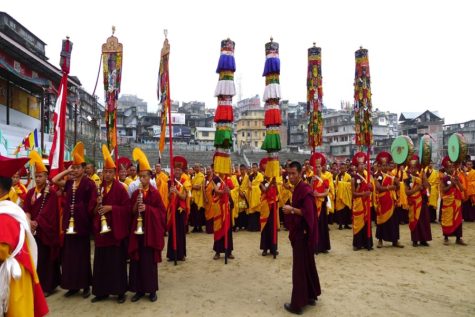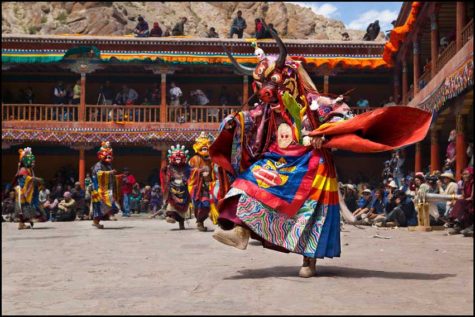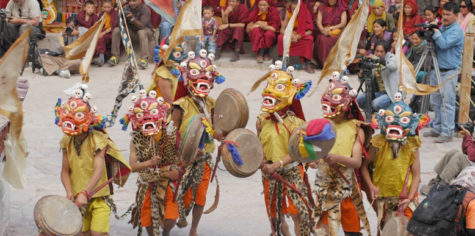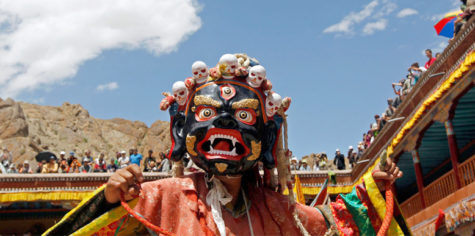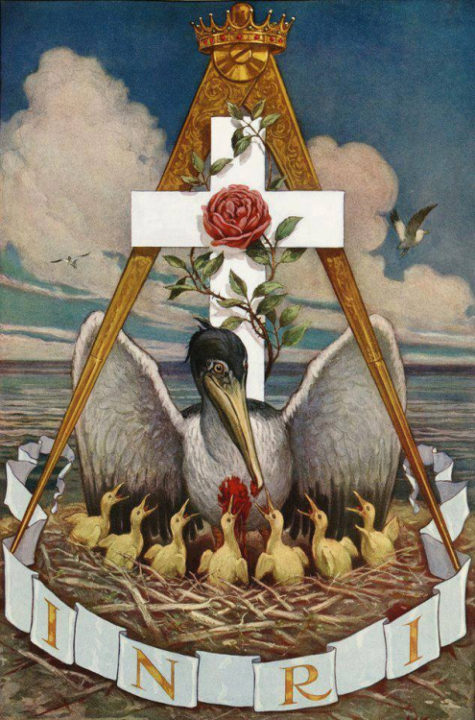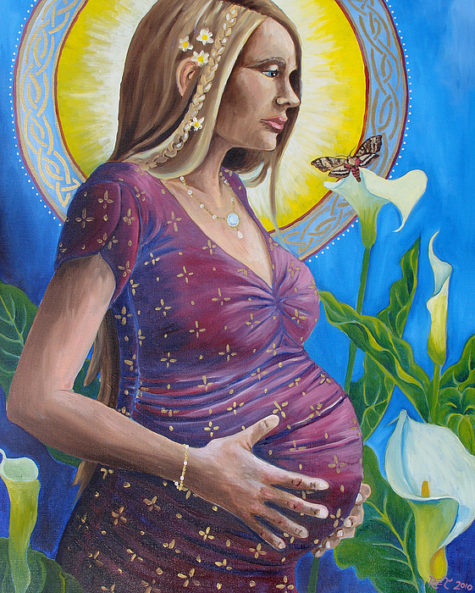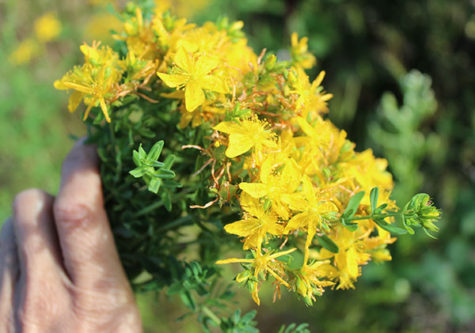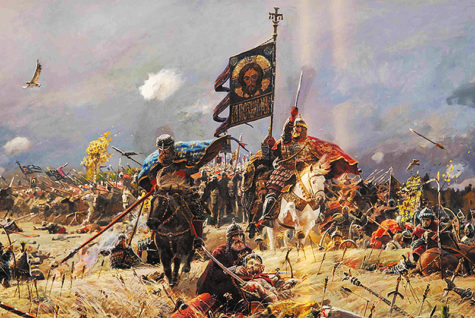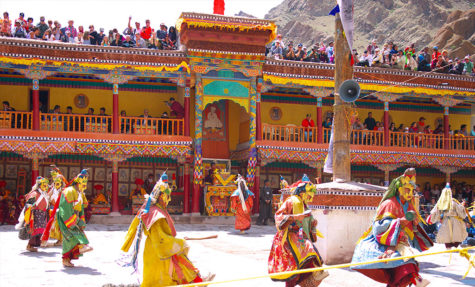
After a tough winter the chills have become bearable, the Hemis monastery opens its doors to enjoy festivities. The date every year changes as it is celebrated every year on the tenth day of the Lunar calendar of the Tibetan month. The dates for this festival vary from year to year. in 2017 it falls on July 3 and 4.
The festival highlight is the Dance performances and plays by masked Lamas. The masked dance represents the good prevailing over evil. The participants of the spellbinding performance are dressed in vibrant costumes and bright masks. Every mask has its own place in Tibetan and Buddhist legends. Signifying aspects of good and evil, they are designed as humble, divine faces, animals, skeletons and numerous frightful figurines. Dancers can be seen with slow dance movements and fanciful expressions.
The masked dance performance is created on music medley of sounds of drums, trumpets and cymbals. The famous Padmasambhava dance, the highlight of the dance shows the victory of the ruta demons. The dances are spellbinding as the divine is represented and its said to be purifying your soul.
Here are some video clips:
Origins
Based on Tibetan and Buddhist Legends, Hemis Festival is said to have its origins back in 8th Century. Lord Padmasambhava also known as Guru Rimpoche is believed to be the local savior who banished demons and evil spirits. The spiritual leader is said to have introduced of Tantric Buddhism in the Himalayan Kingdom. Combining the teachings of Buddhism and Tibetan culture, a new way was established where life was entwined with prayers, austere life and a higher calling.The birth of Guru Rimpoche also known as Lord Padmasambhava is the occasion which is celebrated during Hemis Festival. The spiritual leader is conferred as the local savior.
Celebrations
The mask dance performance is the main attraction of the Hemis Festival
Ever seen Lamas dance? Well here they do, in their tell tale burgundy and mustard yellow attires. The old and the young gather to partake and witness this performance, the re-telling of their ancient mythological stories and folklore. The real spectacle is provided by the masked performers wearing horns, multicolored ribbons and brocade clothes that shine in the bright July sun. And believe me, some of those masks are more expressive than us.
The Chams are a part of the Tantric tradition performed to a cacophony of indigenous musical instruments. The music starts on a slow note and quickly picks up pace as the narrative becomes intense. It keeps building up to a hair raising climax when the leader of the Black Hat dance strikes down the devils idols (made of dough) in combat victory. The message is one that been around for eternity, that good prevails over evil. Its execution through the masked dance performance is what takes your breath away.
Every 12th year known as the Tibetan Year of the Monkey, Hemis Monastery Festival takes an auspicious turn.The unfurling of the largest Thangkha (12 metres) from the second floor of the monastery for the world to see happened in 2016, and won’t happen again for another 12 years. The scripture is worth seeing as it’s so delicately preserved.
Inside the monastery and outside during the festival check out the stalls. From delightful tastes of the mountain Kingdom to unique handicrafts of the region the sight are wonderful. Residents of remote villages, adventure seekers, photographers and travelers make their way here to be a part of the festival.
Other Ways To Celebrate:
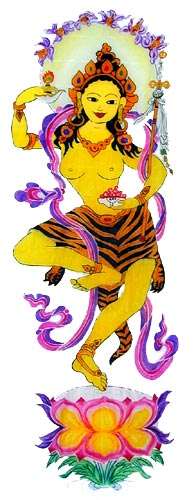 I have been enjoying the book, 365 Goddess. In this book, the author explores a different goddess every day in the context of rituals, feast days, holidays, festivals, and celebrations from around the world. Today is the celebration is the Hemis festival.
I have been enjoying the book, 365 Goddess. In this book, the author explores a different goddess every day in the context of rituals, feast days, holidays, festivals, and celebrations from around the world. Today is the celebration is the Hemis festival.
This festival includes a ritual play in which all manner of mythic creatures are poised against the Tibetan lamas, symbolizing the battle between good and evil. bells, censers, cymbals, and drums draw in positive magic, banish evil, and win the fight for goodness.
The goddesses assigned for this day are the Ratna Dakinis. In Tibet, these goddesses rule over all gestures of goodness and compassion, which naturally help improve karma. Collectively, their names mean “inestimable,” showing us the true power and value in acts of kindness that are driven by a pure heart.
The book also includes ideas for simple magical rituals and/or easy spells that are in keeping with the theme for the day. And so we find that for the Hemis festival the themes are the: banishing; victory; kindness; karma, and the color yellow.
For today, the suggestions are to wear something yellow, and also try to keep the Ratna Dakinis in mind so that your actions will be gentle and filled with kindness. You could also, using yellow ribbons, string together a collection of small bells for a Ratna Dakinis house amulet. Hold these in your hand and empower them by saying:
Let your goodness ring, let purity sing,
with each wind Ratna Dakinis’ blessing bring!
Hang these where they will catch the wind regularly, releasing the magic.
Other ideas include the following:
Do something nice for someone who’s been feeling blue lately, “just because”. Give them some yellow flowers, offer a hug, or maybe make an extra bell amulet for them too! This boosts good karma, makes both of you feel good, and invokes Ratna Dakinis’ blessings through thoughtfulness.
Note: This post was put together by Shirley Twofeathers, you may repost and share it only if you give me credit and a link back to this website. Blessed be.
July 3 is Rosa Mundi or Rose of the World day in the Palestinian Christian Calendar.
This day has its roots in Rosicrucian mythology (a 17th century secret society rooted in Christian mysticism that has influenced many aspects of modern life including Freemasonry.
Esoterically, the Rose is a symbol of wisdom and knowledge with the Rose of the World as a synonym for Pax Cultura, peace through culture. Daniil Andreev, the Russian mystic and poet, saw Rose of the World as a sign of the future age of Mother of the World, a New spiritual and idealized Age of Aquarius.
So now, when you look at a red rose you can see it as a meditation on an ideal new age to come and the dream of world peace and a new awakening.
Because the warm weather continues, activity levels are high, even though the days are beginning to shorten. Consequently, numerous festivals during this month focus on family, friends, and social interaction.
For magical purposes, July directs our attention to personal growth and improvements. This includes increasing your knowledge, continuing efforts for prosperity, creating new ideas and works of art, and also taking time out periodically to really enjoy yourself. Our society sometimes mistakes much-needed leisure time for laziness but this months’s energies know better. Go and have fun, carrying the Goddess with you for a little extra energy.
July Correspondences:
- Nature Spirits: hobgoblins (small grotesque but friendly brownie-type creatures), faeries of harvested crops.
- Herbs: honeysuckle, agrimony, lemon balm, hyssop
- Colors: silver, blue-gray
- Flowers: lotus, water lily, jasmine
- Scents: orris, frankincense
- Stones: pearl, moonstone, white agate
- Trees: oak, acacia ash
- Animals: crab, turtle, dolphin, whale
- Birds: starling, ibis, swallow
- Deities: Khepera, Athene, Juno, Hel, Holda, Cerridwen, Nephtys, Venus
Power flow:
Relaxed energy; preparing, succeeding. Dream work; divination and meditation on goals and plans, especially spiritual ones.
July Festivities:
At first the Romans called this month Quintilis, but later renamed it Julius after Julius Caesar, who was born in this summer month. The Greek Olympian was held for about a week in July. This festival in honor of Zeus consisted of competitions in athletics, drama, music, and other activities. During the time of the Olympian, all participants were given safe-conduct to and from the games. The constant petty Greek squabbles were put aside. A victory in the Olympian was a great achievement, both for the individual and for their city.
Two of the Roman holidays held during this month were July 8 – 9 when the Goddess Juno was honored and the Neptunalia on July 23, when Neptune, the god of the seas and earthquakes, was placated.
In Japan, the Full Moon of July saw the O-Bon, or Festival of Lanterns. This was a combination of Buddhist and Shinto beliefs that honored the dead. Homes, tombs, and ancestral tablets were thoroughly cleaned. Altars and shrines were decorated. The gardens were hung with lanterns to light the way of the dead so that they could join with their families for the three-day ceremony.
The Egyptian New Year fell in July, as did the Opet Festival, which commemorated the marriage of Isis and Osiris. Their sexual union was said to bring good luck to all people. About the same time in Rome, the love of Venus and Adonis was celebrated. The Egyptian year was measured against the Nile and its yearly fertile floods. This was also the time of the birth of Isis and Nephthys, Osiris, Set, and Haroeris. These days were the ones won by Thoth for these deities; births; in other words, there were the necessary days to make the solar and lunar calendars match.
The Incas had a ceremony called Chahua-huarquiz, Chacra Ricuichi, or Chacra Cona, which meant Plowing Month. While the Northern Hemisphere was beginning its agricultural harvests with the reaping of the corn crop, the Southern Hemisphere was just beginning to break ground for planting.
Buddha’s Birth and Preaching, also called the Picture Feast, was celebrated in Tibet.
From: Moon Magic and 365 Goddess
July 1st is Canada Day, a holiday that marks Canada’s independence from Great Britain which took place in 1982.
There is no standard mode of celebration for Canada Day; Jennifer Welsh, a professor of International Relations at the University of Oxford, said about this: “Canada Day, like the country, is endlessly decentralized. There doesn’t seem to be a central recipe for how to celebrate it—chalk it up to the nature of the federation.
Most communities across the country will host organized celebrations for Canada Day, typically outdoor public events, such as parades, carnivals, festivals, barbecues, air and maritime shows, fireworks, and free musical concerts, as well as citizenship ceremonies.
However, the locus of the celebrations is the national capital, Ottawa, Ontario, where large concerts and cultural displays are held on Parliament Hill, with the governor general and prime minister typically officiating, though the monarch or another member of the Royal Family may also attend or take the governor general’s place.
Source: Wikipedia
What follows is a list (in alphabetical order) of the names given to the July moon. Also listed is the tradition and/or origin of that moon name:
Blackberry Moon ~other
Little Ripening Moon ~Creek
Blessing Moon ~Dark Janic
Blood Moon ~other
Buck Moon ~Algonquin
Buffalo Bellow Moon ~Omaha, Arapaho
Claiming Moon ~Celtic, Janic (full)
Corn Popping Moon ~Winnebago
Crane Moon ~Choctaw
Dropping Deer Horns Moon ~Kiowa
Ducks Moult Moon ~Cree
Fallow Moon ~other
Grain Moon ~other
Grass Cutter Moon ~Abernaki
Hay Moon ~Cherokee, Algonquin
Horse Moon ~Apache
Hungry Ghost Moon ~Chinese
Little Harvest Moon ~Creek
Little Ripening Moon ~Creek
Mead Moon ~Medieval English
Meadow Moon ~other
Middle Summer Moon ~Ponca, Dakota
Peaches Moon ~Natchez
Raptor Moon ~Hopi
Raspberry Moon ~Anishnaabe
Red Berries moon ~Assiniboine
Ripe Corn Moon ~Cherokee
Ripe Moon ~San Juan, Apache
Ripe Squash Moon ~Agonquin
Ripening Moon ~Mohawk, Passamaquoddy
Rose Moon ~Neo Pagan
Salmon River Moon ~Wishram
Smoky Moon ~Maidu
Summer Moon ~Colonial American, Algonquin
Sun House Moon ~Taos Native American
Thunder Moon ~Algonquin
Wild Red Cherries Moon ~Sioux
Wort Moon ~other
Young Corn Moon ~Potawatomi
July 2nd, is the Feast of Expectant Mothers. A festival from ancient Rome, in which pregnant women gathered at temples throughout the city to receive blessings and honor goddesses associated with birth and fertility.
Honor the life force that allows the human species to continue and the women who manifest it. If you know someone who is pregnant, visit her today—take her out to dinner, go shopping, or do something else festive. Otherwise you could donate some of your time and resources to an organization that caters to pregnant women.
Here is a blessing you can say privately or write in a card if you know someone who would appreciate it:
Blessed be the life-bearers
Who bring new souls into the world.
Blessed be the babies
Who are our hope for the future.
Blessed be the mothers and fathers
Who raise them to be good people.
Blessed be the pregnant women
For they are precious beyond price.
In the English region of East Anglia, those who continue to follow the ancient ways believe that June 29 is the prime day of the year to harvest herbs for healing use.
Here are some great tips for harvesting herbs:
For the highest quality, herbs should be harvested before the Sun gets too high in the sky. The heat of the Sun will evaporate the essential oil from the herbs, so picking earlier in the day (like by 10:30am) ensures that the highest amount of oils will still be present within them.
When getting plants from the wild, respect the area and plant you are harvesting, never strip a plant bare, never pull it out by the roots to get a few leaves and I always check to see that there are other plants of the same species around and its not some rare almost extinct plant. Also be very sure that the plant you are about to pick is what you think it is, Mother Nature can be very tricky sometimes, and 2 seemingly identical plants can have very different effects when ingested. It is best to ask permission of the plant before taking it’s bounty, and remember, respect, respect, respect!
Transporting your herbs must be done carefully to retain their valuable powers. It’s best to take an open-topped basket or cotton bag with you and some layers of tissue so that herbs can be transported dry and safe back to home, it is pointless seeking out a special plant, than sticking it into a carrier bag in your pocket so it sweats, bruises and it unidentifiable mush by the time you get home.
It is best not to harvest any herbs that have been growing close to the road as the leaves take in the carbon monoxide and poisonous fumes given out by the traffic and take it down into the plant to the root where it becomes stored. Do not pick wild herbs and plants from verges or thoroughfares as this contravenes several laws and also the fact that most areas like these are open to our friendly dog and cat population.
If harvesting wild plants leave a large amount of flowers, seed and root as the plant population of that area will very quickly die out if you go in mob-handed and wrench up the only two plants for miles around.
To harvest herbs in a magickal way visit this post: Harvesting Magickal Herbs in a Magickal Way
Vidovdan (St. Vitus Day) is one of the important religious holidays for the Serbs. It’s annually observed on 28 June (Gregorian Calendar), or 15 June according to the Julian calendar, in use by the Serbian Orthodox Church to venerate St. Vitus. It is an important part of Serb ethnic and Serbian national identity.
Observation of this feast is connected with the Battle of Kosovo in 1389. According to the Serbian Orthodox tradition, the Serbian national identity was founded on the day, when the Ottoman Empire defeated Serbia in the Battle of Kosovo and slew prince Lazar. Ruling sultan of the Ottoman Empire was killed on the same day by Serbian knight Miloš Obilić.
Serbs consider Vidovdan a very important day, that is why many historic events in Serbia took place on June 28, for instance, signing of the Treaty of Versailles (1919), proclamation of Serbian constitution (1921), Slobodan Milošević’s deportation to the International Criminal Tribunal, etc.
In the late Middle Ages, people in Germany and countries such as Latvia celebrated the feast of Vitus by dancing before his statue. This dancing became popular and the name “Saint Vitus Dance” was given to the neurological disorder Sydenham’s chorea. It also led to Vitus being considered the patron saint of dancers and of entertainers in general.
It is also a day for weather watching:
“If St. Vitus’ Day be rainy weather,
It will rain for 30 days together.”
About St Vitus:
There are no reliable facts about existence of Saint Vitus. According to Christian legend, Vitus was the son of Roman senator from Sicily. He converted to Christianity under influence of his mentor. Satin Vitus died as a martyr during the persecution of Christians by Roman Emperors Diocletian and Maximian.
Vitus is considered the patron saint of actors, comedians, dancers, and epileptics, similarly to Genesius of Rome. He is also said to protect against lightning strikes, animal attacks and oversleeping.
Sources: Wikipedia and Any Day Guide
The Fête de la Saint-Jean-Baptiste, held annually on June 24, is the feast day of St John the Baptist, a Jewish preacher who according to the Christian tradition, baptized Jesus in the River Jordan. It is a day of celebration in Quebec and other areas of French Canada. The feast day of Saint John the Baptist or Midsummer was a very popular event in the Ancien Régime of France, and it is still celebrated as a religious feast day in several countries, like Denmark, Norway, Sweden, Finland, Estonia, Spain, Latvia and Lithuania.
Other names for this holiday include the following:
- Saint Jean Baptiste Day
- La Saint-Jean
- St John the Baptist Day
- Fête nationale du Québec
- Quebec’s National Holiday
This is a historical, cultural, national and religious holiday. It is observed by Quebecers, French Canadians, French Americans. Celebrations include parades, bonfires, fireworks, feasting, drinking, musical concerts, flag waving, patriotic speeches, and contests.
Symbols
The flag of Quebec and the fleurs-de-lis are widespread symbols of Saint Jean Baptiste Day. Many people choose to wear blue or white clothing to the celebrations. The fleurs-de-lis represents the flower of an iris or a lily. The fleurs-de-lis is also associated with the Virgin Mary and her purity. It was a symbol of French speaking people and their kings after King Clovis I converted to Christianity in the year 493. It was taken from the papal seal or coat-of-arms when the king converted, to symbolize the strength and significance of the French nation in its union with the Papal state. Quebec’s flag is one-and-a half times as wide as it is high and has a blue background. The background is divided into four rectangles by a cross and each of the four rectangles contains a single white fleurs-de-lis.
What Do People Do?
Various events are organized on Saint Jean Baptiste Day. These range from large scale public celebrations, such as rock and jazz concerts, sports tournaments, parades and firework displays, to small family or neighborhood happenings, such as yard sales, picnics, barbecues, bonfires and children’s entertainment. Many church bells ring in celebration and public dances and fun fairs are held. Some events may be held on the evening of June 23 and many are broadcast live on television, radio or on the Internet. The celebrations are coordinated by the Mouvement national des Québécoises et des Québécois.
Public Life
Saint Jean Baptiste Day is a public holiday in the Canadian province of Quebec. Post offices and many stores are closed. Public transport services run to a reduced schedule in some places or may not run at all in other areas, such as the province’s rural regions. If June 24 falls on a Sunday, the same day is a paid day off for those who work on Sunday. June 25 becomes a paid day off for workers who do not ordinarily work on Sunday.
Background
In ancient times, the summer solstice was honored around June 21. Midsummer festivals, such as those linked with the June solstice, were held in Europe for thousands of years. In the fifth century, Christianity spread through France. When people converted to Christianity, elements of these festivals were combined with feast days for Christian saints. June 24 – the feast day of St John was substituted for the pagan Midsummer celebrations. Traditionally, bonfires would be lit on the eve of June 24 in order to honor the saint.
In France, the celebrations around the feast day of Saint John the Baptist were widely enjoyed and French colonists introduced these traditions to North America.
The patriotic tone of the Saint Jean Baptiste Day celebrations began in 1834. In that year Ludger Duvernay, an influential journalist, visited the St Patrick’s Day celebrations in Montreal, and was inspired to create a similar event for French Canadians. In 1843, he established the Saint Jean Baptiste Society to promote the celebration of Saint Jean Baptiste Day. This organization was supported by the Catholic Church, which saw it as a way to promote social and moral progress. In 1908 St John the Baptist was designated as the patron Saint of Quebec, re-enforcing the connection between Saint Jean Baptiste Day and French-Canadian patriotism.
The celebrations were supported by the Catholic Church and were primarily religious around that time. The lighting of bonfires, a traditional custom on the Nativity of Saint John which ultimately reached back to pre-Christian Midsummer celebrations were still lit at night. In addition, the first Saint-Jean-Baptiste parades were organized. They became an important tradition over time. The procession of allegorical floats was introduced in 1874.
During and after World War I, Saint Jean Baptiste Day was barely celebrated, but in 1925 Saint Jean Baptiste Day became a provincial holiday in Quebec. After a period in the 1960s, when the structure of society in Quebec changed greatly, this holiday became very political. During the Quiet Revolution, the event took a political turn, with many riots and protests taking place.
However, in 1977 Saint Jean Baptiste Day was recognized as the ‘national’ holiday of Quebec and the mood of the celebrations gradually moved towards that of the secular celebrations in modern times.
By making it a statutory holiday, the day became a holiday for all Quebecers rather than only those of French-Canadian or Catholic origins. Celebrations were gradually secularized. While the religious significance of the civic celebration is gone, the day remains popularly called la St-Jean-Baptiste or simply la St-Jean and is still observed in churches.
Collected from various sources
People in the western Carpathian Mountains and other parts of Romania celebrate the Sânziene holiday annually, on June 24. This is similar to the Swedish Midsummer holiday, and is believed to be a pagan celebration of the summer solstice in June.
Sânziană is the Romanian name for gentle fairies who play an important part in local folklore, also used to designate the Galium verum or Cruciata laevipes flowers. Under the plural form Sânziene, the word designates an annual festival in the fairies’ honor. Etymologically, the name stands for sân (common abbreviation of sfânt – “saint”, “holy”) and zână (a word used for fairies in general).
According to the official position of the Romanian Orthodox Church, the customs actually relate to the celebration of Saint John the Baptist’s Nativity, which also happens on June 24.
The folk practices of Sânziene imply that the most beautiful maidens in the village dress in white and spend all day searching for and picking Galium verum. They are instructed to remain alone and unseen, especially by any males. Using the flowers they picked during the day, the girls create wreaths as floral crowns which they wear upon returning to the village at nightfall. They are then supposed to have turned into sânziene fairies, and dance in circle around a bonfire, into which all remains of the previous harvest are thrown. People are prevented from speaking to the girls during this ceremony, as it is presumed that the sânziene spirits possessing them might otherwise be angered or distracted.
In some regions, the girls may keep the wreaths until the following year’s Sânziene. This, they believe, ensures a fertility for their family’s land. In addition, if they place the wreath under their pillow the night right after Sânziene, it is possible that they would have a premonition of the man they are to marry (ursitul, “the fated one”). Another folk belief is that during the Sânziene night, the heavens open up, making it an adequate time for making wishes and for praying, as God is more likely to listen.
In some areas of the Carpathians, the villagers then light a big wheel of hay from the ceremonial bonfire and push it down a hill. This has been interpreted as a symbol for the setting sun (from the solstice to come and until the midwinter solstice, the days will be getting shorter).
In cultural reference. The consequences of heavens opening on Sânziene are connected by some to paranormal events reported during that period of each year. According to popular beliefs, strange things, both positive and negative, may happen to a person wandering alone on Sânziene night. Strange ethereal activities are believed to happen especially in places such as the Băneasa forest (near the capital of Bucharest) or the Baciu forest (near the city of Cluj-Napoca).
From: Wikipedia
